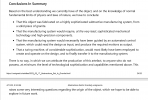If you don't want to give Corsetti the benefit of the doubt, that's cool.
Deirdre, you're only giving him the benefit of the doubt because you're a decent, open-minded person. But in my bunker of skepticism, I've become weary of people (like Mr Corsetti, not you or anyone else here) making claims that don't hold up.
And then trying to persuade others that he's "got a point", selling out real research for "likes" and YouTube views.
And then labelling any qualified researcher who criticizes him part of "The Establishment".
he's talking about the people that came from Kemit . The egyptians before they were egyptians. (Kemit is also the name of a "religion", a kind of study of the old ways of Kemit)
This is what Jim Corsetti says (source and citation in linked post):
"The people in Egypt, they believed in what's called Khemit, the people that existed before the Egyptians"
But, as already discussed,
Khemit is the name of their country. Ancient Egypt
is Khemit. (Kemet is a synonym of Khemit).
Corsetti doesn't provide any evidence that it means anything else.
The adjective "
Kmtyw" is the name of the people.
Ancient Egyptians referred to their homeland as
Kmt (conventionally pronounced as
Kemet).
Sauneron clarified that the adjective Kmtyw means "people of the black land"
("Black land" is a translation of Khemit- the name of ancient Egypt).
Wikipedia, "Ancient Egyptian race controversy", sub-heading
Kemet
https://en.wikipedia.org/wiki/Ancient_Egyptian_race_controversy, accessed 14/04/23.
Corsetti is saying,
"The people in [Khemit], they believed in what's called Khemit, the people that existed before the [people of Khemit]".
Unless we think Corsetti feels the need to tell us that the Egyptians believed they had ancestors who were Egyptians, he must mean something else.
I think it's clear that Corsetti is stating that the ancient Egyptians believed in a specific people (culture) who existed before them.
If true, this might fit with Corsetti's general hypothesis of a much earlier, technologically-adept civilisation. Convenient!
Maybe Corsetti could have shown us an ancient Egyptian painting, carving or text which supports this-
-I have a very limited knowledge of Egyptian theology and creation myths, but I don't recall reference to an older people.
His use of "Khemit" is either a misunderstanding by Corsetti, or the deliberate use of a known word for a purpose different to its normal meaning.
Kemit is also the name of a "religion"
Well,
Kemitism is the name of a new-age religion originating in the 70's. Late Elvis era, post-Woodstock.
He's been putting up a theory... that some of the structures could have been built (or partially built) by the people from Khemit. Then kinda remodeled by 4th dynasty workers.
In the literal sense, they
were built by the people from Khemit- the ancient Egyptians, the 4th dynasty
Kmtyw.
Corsetti seems to think they were built substantially earlier.
But the ages of the Giza pyramids are (approximately) known.
There are two major sources- historical accounts of the genealogies and reigns of the pharaohs with which the pyramids are associated, and since the mid 20th century, radiocarbon dating. Radiocarbon dating broadly confirms the historical estimates.
https://en.wikipedia.org/wiki/Great_Pyramid_of_Giza Wikipedia, "Great Pyramid of Giza" heading "Age", accessed 15/04/23.
The most comprehensive radiological study (which exploited the presence of wood ash in pyramid mortar) was conducted
by Bonani, G., Haas, H., et al, 2001, "Radiocarbon Dates of Old and Middle Kingdom Monuments in Egypt",
Radiocarbon 43, 3, University of Arizona.
Citation information
https://www.cambridge.org/core/jour...nts-in-egypt/A967302ADD527BFEB9226457682C0B4A,
PDF of the paper
file:///C:/Users/User/Downloads/radiocarbon-dates-of-old-and-middle-kingdom-monuments-in-egypt.pdf,
PDF attached below (898 KB)
It is pertinent to note that the authors write (my emphasis)
The American Research Center in Egypt (ARCE) undertook in 1984 the first of the two projects reported here with financial support from the Edgar Cayce Foundation. The Foundation’s interest in the project rested on a hypothesis offered by Cayce that the Giza pyramids dated to 10,500 BC
Over 450 samples were taken from Old and Middle Kingdom sites, including 46 from the pyramid of Khufu (if I counted right), 25 from "Khafre" and 35 from "Menkaure" (pages 9, 10, 11 of PDF).
These pages also detail where the samples were taken from- with "Khufu", samples from the second course of blocks and the top of the pyramid were included.
The results (page 4 of PDF) did not support the hypothesis that the Giza pyramids are 10,500 years old.
For the Giza pyramids, carbon-14 dating indicated age ranges with a median perhaps 200 years earlier than the "historical chronology" estimates.
The presentation of results in Figure 1 (page 4 of PDF) is not beyond criticism; I think you'd have to print out a copy and use a ruler, or use software to superimpose a lined grid, to be confident that you were interpreting the results around the middle of the table correctly. In contrast, the appendix includes the type, location of origin and C14 result for each sample.
The approx. 2 century discrepancies (between the C14 results and the historical chronology estimates) found by Bonani et al were later investigated by Dee, M.W., Ramsey, C.B. et al, 2009, who reanalysed the original raw data with a later Bayesian statistical package.
PDF of their paper,
"Reanalysis of the Chronological Discrepancies Obtained by the Old and Middle Kingdom Monuments Project",
Radiocarbon 51, 3, University of Arizona, can be found here
file:///C:/Users/User/Pictures/reanalysis-of-the-chronological-discrepancies-obtained-by-the-old-and-middle-kingdom-monuments-project.pdf, PDF attached below.
The reanalysed results, for a variety of sites including the three main Giza pyramids, are strikingly close to the historical estimates (page 7 of PDF). Tables giving graphic representations of the probability densities for the ages of structures, and the historical reigns of pharaohs, are shown on pages 8 and 9 of the PDF.
Other radiocarbon studies have given similar results; the Giza structures were most likely built, or started to be built, in the lifetimes of the pharaohs with whom they are historically associated.




